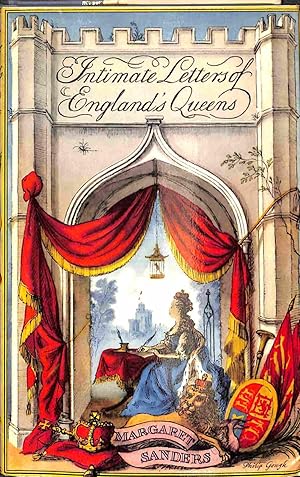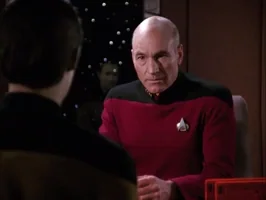
HistoryPop: S03E07 – Six, part 2

Courtney Herber, Ph.D. – Historian
Politics, gender, performance, and theatre in the early modern world







Scrolling Twitter on my phone this morning, a new article from the BBC caught my eye and I knew I had to read it.
Henry VIII divorces led to copycat splits, Bangor researchers say
To save you a click – researchers from the Universities of Bangor (Wales) and Exeter (England) have found a series of court cases dealing with the marital misadventures of Edward Griffith from Gwynedd. Griffith was a Welshman whose life was contemporaneous with Henry VIII’s.
Griffith had married a young woman named Jane, who died shortly after their wedding, so Griffith married her sister Agnes instead. This apparently didn’t go so well, because Agnes left to live with her family again after a year.
After about two years of living without his wife (around 1529), Griffith decided to marry his mistress, another Jane. So – like the king, Griffith had two living wives. One wonders what Bible verse Griffith used to justify his bigamy, as his king was fond of Leviticus and not as big a fan of Deuteronomy.
Leviticus 20:21
“If a man shall take his brother’s wife, it is an unclean thing…they shall be childless.”
Henry used the above quote to assuage his ‘guilt’ at having taken Katherine of Aragon to be his wife in 1509, because it explained to him exactly why they hadn’t had ‘children.’ Of course, they DID have children. Katherine was pregnant at least 5 times and one of their children survived to adulthood to become England’s first undisputed queen regnant. Henry, though, when speaking of ‘children’ he meant sons.
Griffith was probably a fan of Deuteronomy 25:5, as he’d married his first wife’s sister. Having that Biblical permission makes things a bit easier, but in these cases, at least when royals were concerned, a papal dispensation was required.
If brothers dwell together and one of them dies and has no son, the wife of the dead shall not be remarried outside of the family to a stranger; her husband’s brother shall go into her, and take her as his wife, and perform the duty of a husband’s brother to her.
Deuteronomy 25:5
This happened fairly frequently -when a marriage was negotiated for political reasons but there were some Biblical reasons why it shouldn’t happen. Examples from the sixteenth century abound: marrying your dead wife’s sister (Manuel I of Portugal married two of Katherine of Aragon’s older sisters), marrying your dead husband’s brother (Katherine of Aragon married Henry VIII after the death of his older brother, Arthur), marrying a cousin (Charles V had been contracted to marry Mary, his first cousin), or marrying a niece (Philip II , son of Charles V, married Anna of Austria, and this is AFTER marrying his first cousin once removed, Maria Manuela and the above named Mary).
In Griffith’s case, he went back and forth between living with his second and third wives, eventually having three children with his third wife. Apparently he settled down with his third, his bestest most legitimate, wife after a bit and used the King’s marital misadventures to justify his own. Again, not unlike his king.
As Professor Rebecca Probert said, “Viewed in isolation, Edward appears at best indecisive and at worst a complete cad. But if you put his actions in the context of the actions of the king, it seems he felt bound by the arguments put forward by his ruler.”
Of course, that’s if you don’t think Henry, too, was a complete cad.
Now, the reason why I wanted to write about this today is to address some historical inconsistencies in the article. The work itself, by the scholars Probert and Owen, is fascinating and from what I’ve seen, well thought out and put together. The BBC, though, needs to take a bit more care with its captioning.

“Anne Boleyn was executed under Henry’s orders while he divorced Catherine of Aragon.”
This is patently untrue and honestly, unclear. The more I read it, the more I wonder what it is they mean exactly. Do they mean that she was executed during the divorce? Do they mean that Henry gave the orders for her execution during the divorce?
The answer to both of those questions is a resounding NO.
Anne Boleyn‘s fall and execution were due to a few different factors, personal and political. One possible factor was Katherine of Aragon’s death on 7 January 1536. Without Katherine around, Henry didn’t need to be as careful of his relations with European powers (who had generally disapproved of his taking Anne to wife). Katherine, even though she had been a thorn in the side of Anne for years, was a safety net at the same time. Henry was not going to put aside Anne, who he’d struggled FOR YEARS to gain recognition for as his One True Lawful Wife in the eyes of his kingly counterparts, while Katherine was still alive. However, once she was dead, that burden was lifted – he didn’t have to struggle to have Anne recognized as such, because at the time, she was the only wife left.
Another possible factor was the fact that Anne suffered a miscarriage of what is generally acknowledged to be a male fetus in late January 1536. Other scholars, notably Eric Ives (biographer of Anne Boleyn), claim that this put doubts in Henry’s head about the validity of THIS marriage. If God didn’t give him sons with Katherine and that marriage was obviously invalid, then the miscarriage of a son after Katherine’s death, when Anne was THE wife, didn’t bode well.
Suzannah Lipscomb, another brilliant historian, notes that Anne’s miscarriage WASN’T evidence in Henry’s mind that God frowned upon this marriage. Even though Henry was upset at the miscarriage (and who wouldn’t be? Both Anne and Henry desperately wanted this child) and had told Anne, “I see that God will not give me male children,” they recovered from their loss and were excited to try again as there would be no stain of illegitimacy on their next child as Katherine was dead. (Lipscomb, 1536 Oxford: Lion Hudson, 2009), 61 & 63).
After her miscarriage, though, Anne’s downfall came swiftly. She would have been in seclusion (or “confinement”) after childbirth for a little over a month, and would have emerged in early March 1536. This gave other factions jockeying for a position at court the opportunity to push Jane Seymour at Henry. Jane, like Anne, refused to be his mistress (but was seemingly content to engage in courtly flirtations). Now Henry had always had a wandering eye, even if he was generally happily married, so this affair in and of itself wouldn’t have been what led to Anne’s death. Katherine had tolerated Henry’s affairs with more grace than did Anne, but this, too, didn’t lead to her death. As Ives notes in Henry’s ODNB (Oxford Dictionary of National Biography) entry, up until a fortnight before her arrest, Henry was still trying to get Anne recognized as his lawful queen by Charles V (Charles V, the Holy Roman Emperor, was also Katherine’s nephew). So as late as 18 April, Henry acknowledged Anne as his lawful wife.
Ives lays the blame for Anne’s fall squarely on Thomas Cromwell‘s shoulders. Cromwell, Henry’s principal advisor, had been the one behind the divorce, and was a proponent of the Reformed faith (Protestantism). Anne, too, was sympathetic to the Reformed faith, but she and Cromwell were on opposite sides of a debate regarding what to do with all the money that came from the dissolution of the monasteries. Cromwell wanted all of the funds to go into the King’s coffers (and he would most likely be handsomely rewarded) whereas Anne felt the funds should be used for charitable works. On 30 April, the first of Anne’s alleged paramours, Mark Smeaton, was arrested. He, probably after torture, confessed to having slept with Anne. Five more men were accused of committing adultery with Anne (one was acquitted) and she was arrested on 2 May. She was conveyed to the Tower on 6 May for holding until trial.
On 15 May, Anne was tried on the charges of adultery, high treason, and incest. Historians generally believe Anne to have been innocent of all charges. She defended herself well in her trial, but the verdict of the 27 peers who sat as her jury was a unanimous ‘guilty’ and she was executed on 19 May 1536.
So… long story short – Anne couldn’t have been executed under Henry’s orders during his divorce from Katherine, as the caption suggests. Katherine had been dead for months before the machinations of Anne’s swift fall had begun.
While the rest of the article is interesting and adds to historical scholarship, the BBC needs to do better with how that work is presented and what is posted alongside that work. Giving this incorrect information as context is disrespectful to the scholars whose work you’re covering. #dobetter
So I finally (well, finally in this age of Amazon prime shipping means a week later) have my hands on Margaret Sanders’ Intimate Letters of the Queens of England (London: Museum Press LTD, 1957), which is the source Patrick Williams pointed to for his version of Katherine of Aragon’s final letter to Henry VIII.
I wanted to follow the clues like a good detective and see where Sanders found HER copy of the letter which she printed in Intimate Letters.


First off – this is a gorgeous old book and you can tell it is meant for a general audience – it says so in the preface. 🙂 Sanders meant to give readers an introduction to these queens as human beings with complicated emotional lives that can’t be distilled down to ‘divorced, beheaded, died…’ and tried to choose letters that display those relationships with others. “Historians must inevitably be prejudiced, either from religious, political, or personal attitudes,” Sanders notes, and then goes on to say that in her introductions to each of the queens and their letters that she just tried to give the bare minimum of factual information, but, like those aforementioned historians, she exhibits her own bias and personal opinions (apparently Henrietta Maria was “the loveliest of all England’s Queens” and Anna of Denmark had “no great pretensions to beauty” but she had a great personality).


This is particularly evident in Katherine’s introduction where she takes at face value Katherine’s virginity going into her second marriage (which, let’s face it, every historian who works on the Tudor period has their own opinion, but it’s far better as a scholar to present it as a complex unknown full of messy political, personal, and religious meanings rather than “In the meantime, this young widow of an unconsummated marriage…” which, technically, if it were unconsummated, it wouldn’t have been a complete marriage, but that’s beside the point).
Sanders includes helpful footnotes to explain who people are and to provide further context when it’s needed for the general audience who may not know who “My Lady of Salisbury” was… although reading through the footnotes, if I didn’t know that Lady Salisbury was Margaret de la Pole, the countess of Salisbury, I’d be further confused – “state-governess to Mary” and “Mary’s best friend next to her mother” are all that’s used to describe who she was. Another confusing point is that Mary I was “brought up in her mother’s Faith as a strict Roman Catholic.” This is certainly true, but it neglects the important consideration that it was also her father’s faith at the time, if you were a practicing Christian at the time, it most likely was your faith as well because the Roman Catholic church was the dominant church in western Europe.
Anywho, after taking the time to peruse the book and finding other fun tidbits that I may post later, I want to give you the transcription of the Final Letter as put in Intimate Letters and then share with you her citation.
My Lord and Dear Husband,
I commend me unto you. The hour of my death draweth fast on, and my case being such, the tender love I owe you forceth me, with a few words, to put you in remembrance of the health and safeguard of your soul, which you ought to prefer before all worldly matters, and before the care and tendering of your own body, for the which you have cast me into many miseries and yourself into many cares.
For my part I do pardon you all, yea, I do wish and devoutly pray God that He will also pardon you.
For the rest I commend unto you Mary, our daughter, beseeching you to be a good father unto her, as I heretofore desired. I entreat you also, on behalf of my maids, to give them marriage-portions, which is not much, they being but three. For all my other servants, I solicit a year’s pay more than their due, lest they should be unprovided for.
Lastly, do I vow, that mine eyes desire you above all things.
Sanders, Intimate Letters, 12.
And there’s one last bit that I’ve been saving for the end. I had to order another book to dig into this mystery. Most of the documents that Sanders brings together are from the royal archives at Windsor Castle, the Strickland sisters’ work The Lives of the Queens of England, or other letter collections. As a historian, one needs to be a good detective – even though it can take forever and lead you down rabbit holes that go nowhere, at least for the project you’re currently working on – and to be a good detective, one needs to follow the clues.
In Sander’s bibliography, The Final Letter wasn’t cited as from an archival source – it’s from another letter collection.

“Chatterton: Royal Letters” is all we get in Sander’s bibliography to note where SHE got this letter from. So I used my Googlefu and found that this citation refers to Royal Love Letters by E. K. Chatterton, originally published in 1911.
After a little more searching, I found a hardcover copy that will be winging its way to me from England soon. As soon as it does, I will update with more information.
The game is afoot!

This is one of the first DH projects that I’ve worked on. It shows Anna of Denmark’s official entry into Edinburgh.
Process:
I found a near contemporary map of Edinburgh and using a narrative account of her entry, plotted each point on the map and have included what pageants happened at each site as well as historical engravings or photos of the landmarks of Edinburgh.
Firstly, I found the 1582 map of Edinburgh on the National Library of Scotland’s webpage. It said that the map itself was free to use for academic purposes, but it was provided in a much smaller format. Geoff was able to find a high quality version of the same map and piece it together to be used in a “zoomify” project, where it can, well, be “zoomed” into to see smaller details in great clarity. Once it was zipped together like a digital jigsaw puzzle, I worked to figure out where each of the places mentioned in the Danish account of the Entry were located. To do that, I consulted Google Maps for some, my own knowledge for others, as well as a fantastic historic map collection (of JUST Edinburgh!) put together by Christopher Fleet and Daniel MacCannell and published in association with the National Library of Scotland. The narrative account is contained in David Stevenson’s Scotland’s Last Royal Wedding, with an English translation by Peter Graves. All quotes, unless otherwise noted, as from Scotland’s Last Royal Wedding.
After reading through the narrative account and finding any specific places mentioned by name, and plotting those on the map, I had to figure out a logical path to find all of the other places that were not mentioned by name. I think I have done so accurately, but the stylized nature of the map makes pinpoint accuracy difficult. I’m sure there were many more “side streets” in the Edinburgh of 1590 than pictured in the map, just as there are many little alleyways today.
Once I established a credible path for Anna’s entry to follow, I set about finding images to go along with each place. I tried to include both contemporary or near-contemporary images of how the building or feature would have looked in Anna’s time as well as modern photographs (especially the gorgeous view from the inside of St. Giles!). After that, I tried to re-write some of the pageants and to describe them simply so that one could follow along easily and enjoy imagining some of the splendor of Anna’s entry. Sometimes, I found that I could not do the original text justice and left the quotes, but others I found I could put my own rhetorical spin on and re-wrote. This is, of course, not complete as the narrative account does contain the text of the speeches and pageants, but instead of including the lengthy prose I wanted to impart more of the visual aspects of Anna’s journey, rather than the textual.
The reason that I chose this particular project to craft is two-fold. One, is honestly I’ve just been wanting to do this for a long time and finally found the software that I could do it with. I’ve worked with Anna for years now and have been itching to do more work with her in the last year. Secondly is more of a scholarly reason: Entries seem to be rather understudied. I am building for myself a scholarly toolkit of historian’s tools but also literary analysis and theatrical analysis and Entries are perfect blends of all three. Entries are important introductions into not only how royals wanted to represent themselves to their people (self-fashioning), but also the expectations that the people had for their new king or queen. It was their first chance to see their new king or queen, resplendent in their finery. It was meant as a way to both flatter and educate the king or queen, and so can give a little insight into who that king or queen was as a person and how they were perceived by others. For Anna, much was made of her royal lineage and how powerful and noble Denmark was. The people of Edinburgh, in their speeches, asked Anna to be good, kind, virtuous, and to bear James many children. They also asked her to love Edinburgh and Scotland, even though it was not as rich or powerful as Copenhagen or Denmark. They also wanted her to love James, because he was also just and wise. This shows not only the love that they hoped that Anna would bestow upon them, but the love they had of their own city and kingdom. They felt Scotland a worthy match for Anna, just one that is a little rough around the edges.
Without further ado, Anna’s Entry into Edinburgh, 1590: